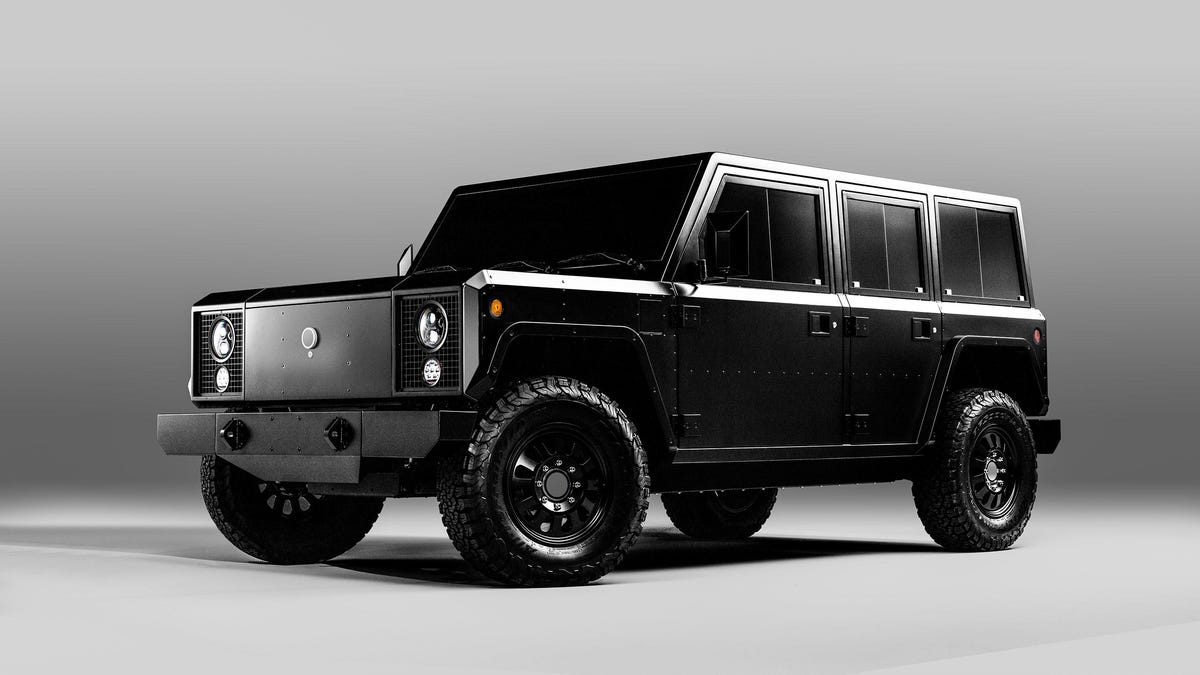Bollinger B1 and B2 take electric vehicles into the dirt
This electric truck and SUV pack some serious specs.
In the two years since Bollinger first appeared out of nowhere with an electric SUV composed almost entirely of straight edges, a lot has happened. Rivian burst onto the scene promising some seriously styled electric pickups and SUVs , and even standard automakers like Ford have promised to add some rugged electric vehicles in the future. Now, as 2019 draws to a close, Bollinger is ready to show off its next step.
Bollinger on Thursday unveiled the latest iteration of its B1 four-door electric SUV and its B2 electric pickup truck. Referred to as "beta prototypes" in the release, it's unclear just how close these vehicles are to the real-deal production version, but they look just a bit more polished than the renderings and pictures that have come before this. Prior to this, we hadn't seen in-person pictures of Bollinger's four-door products, only the two-door B1 SUV.
Both Bollinger models are built on the same Class 3 truck platform -- this is the same class of truck as heavy-duty "3500" pickups from other domestic automakers. Both the B1 and B2, in these new pictures, look utilitarian as heck. The two are a collection of straight lines and exposed rivets, with the primary differentiator between them being whether the bed is enclosed or not.
The interiors are equally spartan, with a flat dashboard housing a few gauges and switches. The seats bolt right to a flat floor that should make hauling might easy. Above occupants' heads are six glass panels, making the cabin feel nice and airy.
The most impressive part of this reveal is the spec sheet. Both of these EVs are plenty potent, with a dual electric-motor setup granting 614 horsepower and 668 pound-feet of torque. That's enough for a 4.5-second sprint to 60 miles per hour on its way to a 100-mph top speed. It's also enough grunt to permit 5,201 pounds of payload capacity and 7,500 pounds of towing capacity. It has a two-speed gearbox with a low range, which should work well alongside its 15-inch ground clearance and 10-inch wheel travel. Its battery pack measures 120 kilowatt-hours, but Bollinger declined to mention a range.
So, what's next? We're not entirely too sure, actually. Bollinger said in its release that these reveals "mark a major milestone in the company's next steps toward production." However, the company didn't offer up specifics, saying only that information about "pricing, manufacturing and timing" will arrive in "the coming months." Hopefully, there won't be another two-year gulf before we learn anything else.


